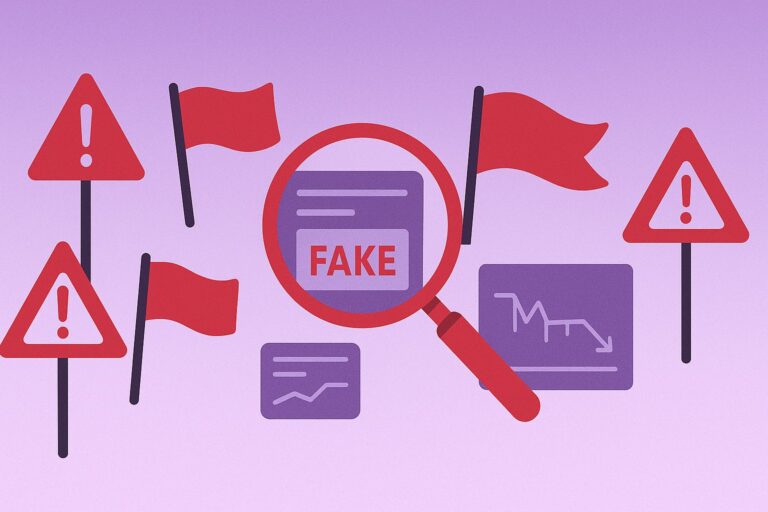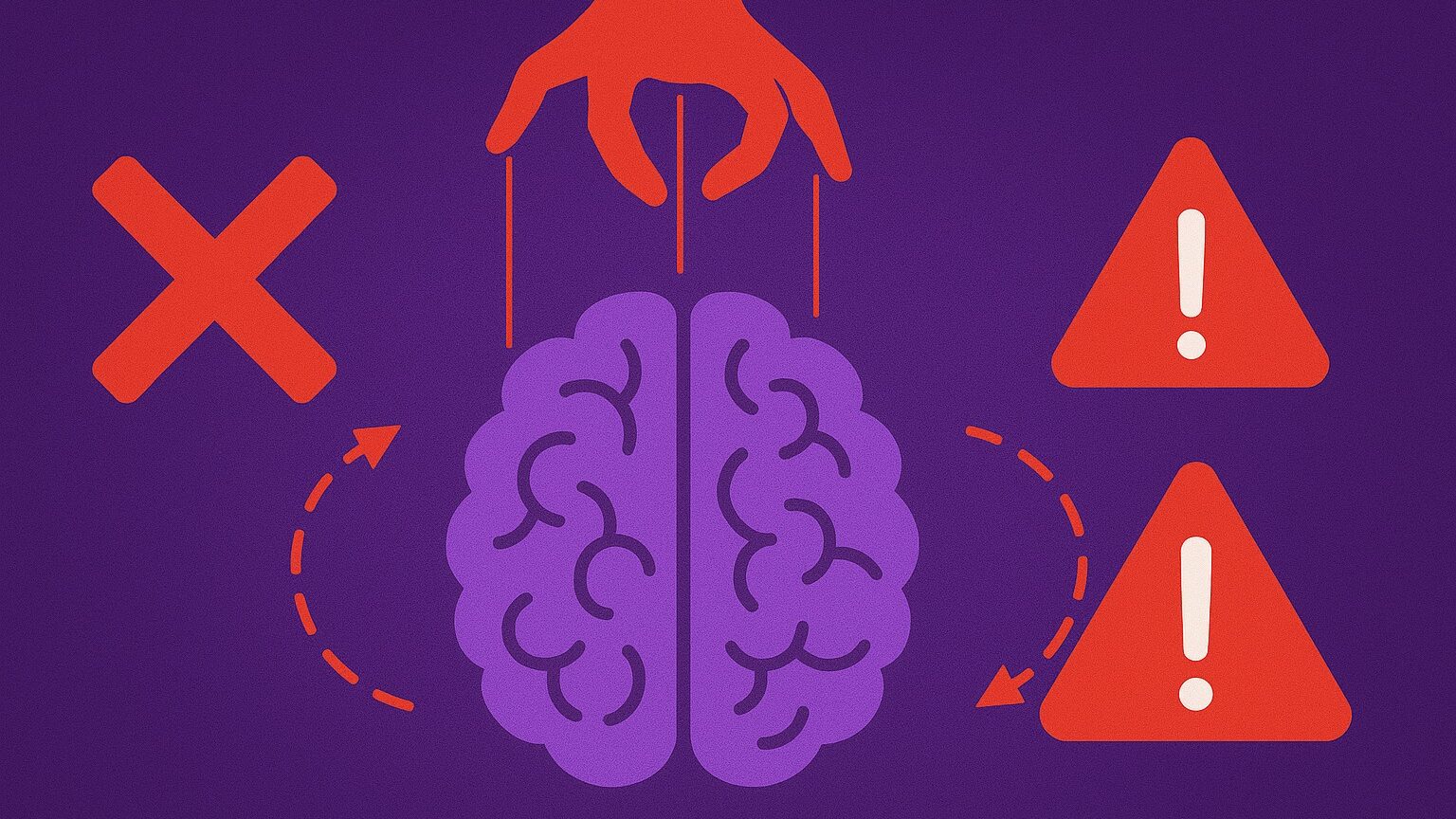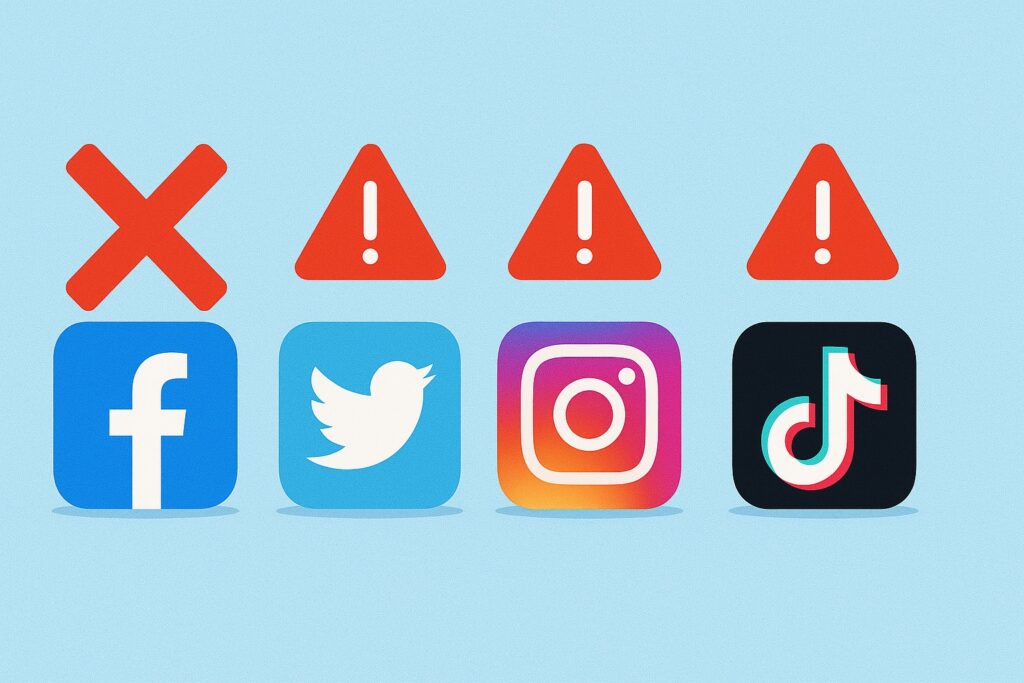
Trading Mentorship Red Flags: How to Spot Fake Traders/Gurus in 2025
How to Spot Fake Traders and Fake Trading Gurus (2025)

The trading education industry is worth billions, but lurking within it are countless scammers preying on aspiring traders’ dreams of financial freedom.
If you’ve ever wondered whether that flashy Instagram trader is legitimate or just another fake guru, you’re asking the right questions.
Every year, thousands of people lose money to fraudulent trading mentors who promise easy profits but deliver nothing but recycled content and fabricated results.
These scammers have perfected their tactics, making it increasingly difficult to distinguish between legitimate educators and sophisticated fraudsters.
The stakes are higher than ever in 2025, with new platforms and technologies making it easier for scammers to create convincing false evidence. Let’s expose the red flags that reveal fake trading gurus and protect yourself from becoming their next victim.
Why Trading Mentor Scams Are So Common

The trading education space attracts scammers for several reasons:
High-Profit Margins
Digital courses and mentorship programs cost almost nothing to produce but can sell for thousands of dollars. A single fake guru can make millions before disappearing.
Difficult to Verify Claims
Unlike other industries, trading results are hard to verify independently. This opacity creates perfect conditions for fraudulent claims.
Emotional Vulnerability
People seeking trading education are often desperate for financial improvement, making them more susceptible to too-good-to-be-true promises.
Regulatory Gray Areas
Trading education exists in a regulatory gray area where enforcement is challenging, allowing scammers to operate with minimal risk.
According to the FTC, Americans lost over $3.8 billion to investment scams in 2022, with trading education fraud representing a significant portion of these losses.
The Anatomy of Trading Mentor Scams
Understanding how these scams work helps you recognize them:
The Setup
Scammers create compelling personal brands showing luxury lifestyles funded by “trading success.” They use social media to display expensive cars, homes, and vacations.
The Hook
They offer free content or low-cost “courses” to build trust and capture contact information. This content often contains basic, recycled trading information.
The Bait
After establishing trust, they present expensive mentorship programs with promises of exclusive strategies and guaranteed profits.
The Switch
Once payment is received, the quality dramatically drops. Students receive basic information, limited support, and no actual path to the promised results.
The Disappearance
When complaints mount or regulatory pressure increases, scammers simply rebrand or disappear, taking their profits with them.
Major Red Flags to Watch For

1. Lifestyle Marketing Over Education
Red Flag: Mentors who focus more on showing off luxury items than demonstrating actual trading knowledge.
What to Look For:
- Instagram feeds filled with supercars, private jets, and cash displays
- Marketing that emphasizes lifestyle over education
- Claims that trading funded their lavish lifestyle within unrealistic timeframes
- Rented or borrowed luxury items for social media content
Reality Check: Legitimate traders focus on education and strategy, not material possessions. Real wealth from trading typically builds over years, not months.
2. Unrealistic Profit Claims
Red Flag: Promises of guaranteed returns or extremely high success rates.
Examples of Suspicious Claims:
- “Make $1,000 daily with just 30 minutes of trading”
- “90% win rate guaranteed”
- “Double your money every month”
- “Risk-free profits”
- “Turn $100 into $10,000 in 30 days”
Reality Check: Professional traders know that consistent profitability takes years to develop, and no trading strategy guarantees profits.
3. Screenshot-Only “Proof”
Red Flag: Showing trading results only through easily manipulated screenshots.
Why Screenshots Are Meaningless:
- Can be edited in under 60 seconds using browser tools
- Demo accounts can show “profits” without real money
- Old screenshots can be reused repeatedly
- No way to verify authenticity or timeline
What Real Proof Looks Like: Third-party verified statements, live trading sessions, and platforms like Skippa that automatically verify trades from actual brokerage accounts.
4. High-Pressure Sales Tactics
Red Flag: Creating artificial urgency to prevent due diligence.
Common Pressure Tactics:
- “Only 3 spots left!”
- “Price doubles tomorrow”
- “This offer expires in 24 hours”
- Making it difficult to ask questions or get refunds
- Emotional manipulation about “missing out on financial freedom”
Reality Check: Legitimate educators want informed students. They encourage questions and provide detailed information about their programs.
5. Lack of Trading Background
Red Flag: Mentors with no verifiable trading experience or professional background.
Red Flags in Backgrounds:
- No employment history in finance or trading
- Claims of being “self-taught” with no verifiable track record
- Inability to discuss basic trading concepts in detail
- No professional licenses or certifications
- Evasiveness about past trading experience
6. No Risk Discussion
Red Flag: Mentors who don’t emphasize the risks of trading or discuss money management.
Missing Elements:
- No mention of potential losses
- Lack of risk management education
- No discussion of position sizing
- Failure to mention that most traders lose money
- Avoiding topics like drawdowns and losing streaks
7. Testimonials That Don’t Add Up
Red Flag: Fake or manipulated student testimonials.
Suspicious Testimonial Signs:
- Stock photos with generic names
- Overly dramatic success stories
- Lack of specific details about trading strategies
- No way to contact or verify the testimonial sources
- Testimonials that sound too similar to marketing copy
8. Secretive “Proprietary” Strategies
Red Flag: Claims of having secret trading strategies that others don’t know.
Reality: Most profitable trading strategies are well-known. The challenge is execution, discipline, and proper risk management, not secret knowledge.
9. No Real-Time Trading Activity
Red Flag: Mentors who never show live trading or real-time decisions.
What’s Missing:
- No live trading streams
- No real-time trade alerts
- Inability to answer questions about current positions
- Only posting about trades after they’re closed
- Avoiding discussions about current market conditions
10. Defensive About Verification
Red Flag: Getting angry or evasive when asked for proof of trading results.
Defensive Behaviors:
- Refusing to provide verified account statements
- Getting aggressive when questioned about results
- Blocking users who ask for proof
- Making excuses about why they can’t show live results
- Claiming that asking for verification shows “poor mindset”
Platform-Specific Red Flags

Instagram/Social Media
- Sudden appearance with no trading history
- Limited followers but excessive lifestyle posts
- Comments disabled on posts
- Generic motivational quotes instead of trading content
- Stock photos of trading setups
Discord/Telegram Groups
- Paid groups with no free content to evaluate quality
- Admins who don’t participate in real-time discussions
- No verified trade sharing
- Members prohibited from questioning results
- Focus on recruiting new members rather than educating existing ones
YouTube/Video Content
- Only old trading footage with no recent content
- Inability to explain trades in detail
- Focus on lifestyle vlogs rather than educational content
- Comments sections heavily moderated or disabled
- No live streaming or real-time interaction
Advanced Scammer Tactics to Watch For
Fake Brokerage Statements
Sophisticated scammers create convincing fake brokerage statements using graphic design software. Always verify statements directly with brokers when possible.
Demo Account Deception
Scammers use practice accounts to generate impressive-looking results, then present them as real trading profits.
Ponzi-Style Structure
Some fake mentors use new member fees to pay for retreats or “profits” for older members, creating a pyramid scheme disguised as education.
Affiliate Network Abuse
Scammers recruit affiliates to promote their programs for commissions, making it seem like they have broader support and credibility.
Technical Analysis Misuse
Using complex-looking charts and indicators to appear knowledgeable while providing meaningless or incorrect analysis.
Psychology Behind Mentor Scams
Exploitation of Hope
Scammers target people’s desire for financial freedom and paint trading as an easy solution to money problems.
Authority Positioning
They position themselves as successful authorities, using psychological triggers to build trust and compliance.
Social Proof Manipulation
Fake testimonials and manufactured urgency create false social proof that others are succeeding.
Fear of Missing Out (FOMO)
Limited-time offers and “exclusive” access create urgency that bypasses rational decision-making.
Legitimate Trading Education: What It Looks Like
Realistic Expectations
Real educators emphasize that trading is difficult, requires ongoing education, and involves significant risk. They discuss failure rates honestly.
Educational Focus
Genuine mentors prioritize teaching sustainable skills over promoting quick profits. They focus on risk management, psychology, and systematic approaches.
Transparent Track Records
Legitimate traders provide verified performance data and are open about both wins and losses. They use platforms that automatically verify their trades.
Professional Background
Real educators often have professional trading experience, relevant certifications, or institutional backgrounds they can verify.
Long-Term Relationships
Authentic mentors build ongoing relationships with students, providing continued support rather than one-time sales.
How to Research Potential Mentors
Due Diligence Steps
- Search their name + “scam” or “review” on multiple platforms
- Check their LinkedIn for professional trading history
- Look for third-party verified performance data
- Ask for references from long-term students
- Verify any claimed certifications or professional licenses
Questions to Ask
- Can you provide third-party verified account statements?
- What was your worst losing streak and how did you handle it?
- Can you explain your trading strategy in detail?
- Will you trade live in front of potential students?
- Can I speak with students who’ve been with you for over a year?
Warning Signs During Research
- Inability to find independent information about them
- Conflicting stories about their trading background
- Lack of detailed responses to technical questions
- Hesitation to provide verifiable information
The Cost of Falling for Scams
Financial Losses
Beyond the initial course fees, victims often lose additional money trying to implement ineffective strategies. Average losses can range from hundreds to tens of thousands of dollars.
Psychological Impact
Failed mentorships can destroy confidence in trading and financial decision-making. The psychological damage often exceeds the financial losses.
Time Wasted
Months or years spent following fake mentors could have been used learning legitimate trading skills or pursuing other opportunities.
Opportunity Cost
Money lost to scammers could have been invested in legitimate education, trading capital, or other investments.
Protecting Yourself from Trading Mentor Scams
Before Paying Anything
- Take time to research thoroughly
- Ask for specific, verifiable information
- Start with free content to evaluate quality
- Consult with other traders or professionals
- Trust your instincts if something feels wrong
Red Flag Responses
If a potential mentor exhibits red flags, walk away immediately. No legitimate educator will pressure you or refuse reasonable verification requests.
Building Real Trading Skills
Focus on developing your own analytical abilities rather than relying solely on others’ signals. Use mentors as guides, not substitutes for your own learning.
Community Verification
Join communities where members share verified results and can vouch for educators’ credibility. Platforms that automatically verify trades provide additional security.
Technology Solutions for Verification
Modern technology makes it easier to verify trading mentors:
Automated Trade Verification
Platforms like Skippa connect directly to mentors’ brokerage accounts, automatically sharing verified trades in real-time. This eliminates the possibility of fake screenshots or delayed reporting.
Third-Party Tracking
Services like MyFXBook, TradingView, and others provide independent verification of trading performance over extended periods.
Blockchain Solutions
Some platforms are exploring blockchain technology for immutable trade records that cannot be falsified.
Live Streaming Integration
Technology now allows for seamless integration of live trading with educational content, making verification easier.
Legal Recourse and Reporting
When You’ve Been Scammed
- Report to the FTC (consumer.ftc.gov)
- Contact your state’s securities regulator
- Report to the platform where you found the scammer
- Consider consulting with a consumer protection attorney
- Document all communications and transactions
Prevention Through Reporting
Reporting scams helps protect others and provides data for regulatory agencies to track patterns and shut down fraudulent operations.
The Role of Legitimate Platforms
Quality trading education platforms are implementing verification features to combat scams:
Verified Mentors
Platforms now verify mentor credentials, trading history, and ongoing performance before allowing them to teach.
Real-Time Trade Sharing
Technology enables automatic sharing of real trades, making it impossible to fake results.
Community Accountability
Strong communities call out questionable behavior and share experiences about different mentors.
Transparent Performance Tracking
Legitimate platforms track and display mentor performance transparently, including losses and drawdowns.
Building Long-Term Trading Success
Focus on Education Over Signals
Real trading success comes from understanding markets, not just following someone else’s trades. Invest in comprehensive education that builds your analytical skills.
Develop Your Own System
Use mentors to guide your learning, but work to develop your own trading system based on your risk tolerance and goals.
Practice Proper Risk Management
No mentor can eliminate trading risks. Focus on position sizing, stop losses, and capital preservation strategies.
Join Verified Communities
Participate in communities where trades are automatically verified and members share real experiences, both positive and negative.
Red Flags vs. Green Flags: Quick Reference
🚩 Red Flags (Run Away):
- Lifestyle marketing over education
- Guaranteed profit promises
- Screenshot-only proof
- High-pressure sales tactics
- Defensive about verification
- No discussion of risks
- Fake testimonials
- Secret strategies claims
✅ Green Flags (Proceed with Caution):
- Focus on education and skill building
- Realistic expectations about trading
- Third-party verified performance
- Open about losses and mistakes
- Professional trading background
- Emphasis on risk management
- Transparent community interaction
- Multiple verification methods
Taking Action: Your Next Steps
If you’re currently considering a trading mentor:
- Apply the Red Flag Test: Go through this checklist systematically
- Do Independent Research: Don’t rely solely on the mentor’s marketing materials
- Start Small: If you proceed, begin with minimal commitment
- Verify Everything: Use independent sources to verify claims
- Trust Your Instincts: If something feels wrong, it probably is
Remember: Legitimate trading education exists, but it requires careful vetting and realistic expectations.
Conclusion: Staying Safe in the Trading Education World
The trading mentor industry will continue attracting both legitimate educators and sophisticated scammers. Your best defense is knowledge, skepticism, and thorough verification.
Don’t let the promise of easy money cloud your judgment. Real trading success takes time, education, and practice. Be willing to invest in legitimate education, but always verify credentials and track records independently.
The mentors who are genuinely interested in your success will welcome your questions and provide verifiable proof of their expertise. They understand that trust must be earned through transparency and results.
Looking for verified trading mentors you can trust? Skippa provides automatic trade verification directly from mentors’ brokerage accounts, eliminating fake screenshots and ensuring complete transparency. Schedule a demo to see how verified trading education can accelerate your learning while protecting you from scams.
Protect yourself from trading mentor scams by demanding verification and maintaining healthy skepticism. Real trading education builds skills, not dependencies.
